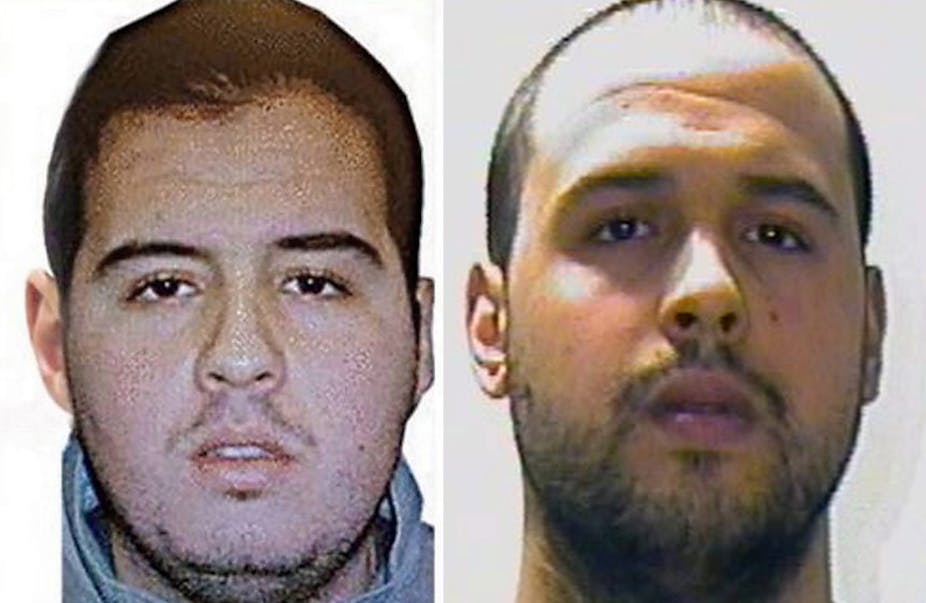Media outlets were quick to note the criminal backgrounds of the perpetrators of last week’s Brussels terror attacks. Drawing comparisons with those who undertook the November 2015 Paris attacks, this analysis suggested the rise of a new generation of terrorist recruits who are not “radical Islamists” but “Islamised radicals”.
A closer analysis of the perpetrators of recent attacks suggests that Islamic State (IS) has a different kind of appeal to that of its predecesor, al-Qaeda in Iraq. Apart from having little or no knowledge of religion, the new crop of IS recruits come primed for violence with a different set of skills, honed through criminal activity.
Evidence collected by the Countering Violent Extremism research program from more than 100 case studies of lone-wolf actors who have perpetrated foreign or domestic terrorism confirms this trend. It points to an important distinction between terrorist attackers who are driven by ideology and religion, and those for whom violence is less about ideology.
Early understanding
Terrorist and violent extremist groups have traditionally appealed to the elite and educated. Egypt’s Muslim Brotherhood, for example, drew its membership primarily from among university students.
Early profiles of terrorists tended to describe them as middle-to-upper-class university graduates. A 1977 analysis of 350 terrorists found that not only were they university graduates but that universities also served as major recruiting grounds for terrorist organisations.
Our understanding of religious terrorists has followed the logic that they are driven by religious conviction and radicalised to commit acts of violence through religion. The conventional wisdom has been that some individuals who are religiously radical will find the means and opportunity for violence.
According to this understanding, there is a difference between radicalisation in opinion and radicalisation in action. When an individual becomes radicalised in their opinion – once they accept the extreme interpretation of Islamic text that justifies murder, terror and violence – they then seek out ways to carry out murder, terror and violence.
The role of criminality
Brothers Brahim and Khalid el-Bakraoui, who carried out suicide attacks at Brussels Airport, had previously been in jail for violent offences.
Abdel Hamid Abaaoud, the alleged leader of the Paris attacks and connected to the Brussels cell, was a career criminal convicted of violent crimes including assault. Another of the Paris attackers, known radical Omar Ismail Mostefai, was arrested for a string of offences in his youth.
Violence and aggression as a personal factor in lone-actor attacks has not received much attention in analyses of radicalisation to violent jihadism. But studies of other forms of terrorism and violence have looked specifically at criminality.
One study of xenophobic violence in Germany found up to 10% of violent extremists had prior records for politically motivated crimes. Up to 35% had prior records for other crimes.
This study identified four types of extremists:
right-wing activists;
ethnocentric youth;
criminal youth; and
fellow travellers.
Three of these types had some history of criminal activity. Right-wing activists typically had prior records for multiple political crimes. Ethnocentric youth typically had prior records for juvenile crime. Criminal youth typically had multiple prior records of criminal activity.
Criminal youth with a history of violence do not appear to have marked right-wing ideological leanings or political interests. For them, violence is seen not as a means of achieving political or ideological goals. Instead, it is a normal part of their everyday lives. Criminal youth also tend to come from unstable family backgrounds and have lower education attainment levels.
Clues for the future
Using the case studies, we have distinguished between three different kinds of violent jihadist terrorists.
Type 1 were highly religiously motivated and tended to become violent as a result.
Type 2 had criminal or violent pasts or long-term signs of aggression and were not highly religiously motivated, though they still used religion to justify their actions.
Type 3 were extremely violent and were likely to declare their group or ideology affiliation during or after the attack.
Of all the case studies, 30% had a criminal record. A further 20% had violent or aggressive histories, according to reports and interviews. And 37% met all the criteria for being ideologically radicalised.
The smallest type were Type 3s. Only three cases met all the criteria.
The case studies also confirm that IS is attracting younger recruits more likely to have criminal or violent pasts. Compared to attackers and foreign fighters before IS’s rise, those recruited after 2014 were more likely to have been involved in criminal activity.
The findings provide some useful clues to radicalisation and how we deal with it. Criminality and gang culture have replaced extreme interpretations of religion as the binding group identity that characterised earlier waves of violent jihadist recruits. The criminal element among this new wave means they are likely to be already known to law enforcement – though not necessarily for violence or extremism.
If the recruitment trends continue, police will have a greater role to play in countering terrorism and violent extremism. It also means that prisons – often considered breeding grounds for radicalisation – are possibly more prominent as incubators for networks of violent jihadists.
The shift in terrorist recruitment could prove helpful for law enforcement. Being able to identify criminality and violence as a key feature of new recruits means law enforcement agencies can know what to look for and take early action.
While terrorist attackers will try to avoid drawing attention before they act, their violent and criminal pasts could give them away.

